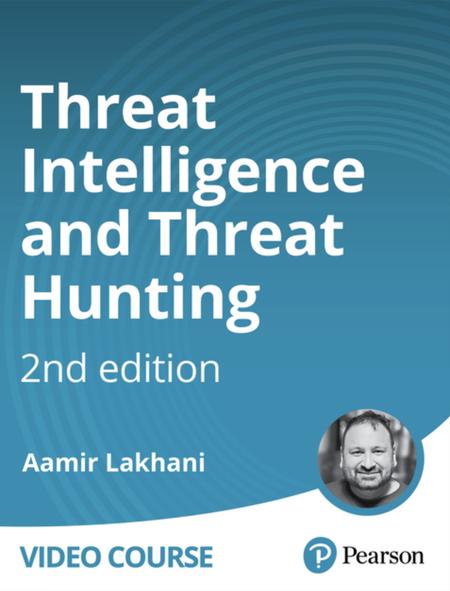English | MP4 | AVC 1280×720 | AAC 44KHz 2ch | 53 Lessons (4h 58m) | 1.15 GB
Explore key threat intelligence and threat hunting concepts to help you protect your sensitive data.
A cybersecurity professional needs to understand threats, threat actors, and have a clear understanding of where attackers are trying to take advantage of vulnerabilities. The Threat Intelligence and Threat Hunting, 2nd Edition video course provides learners with the knowledge and skills to fortify systems, protect sensitive data, and ensure compliance with privacy regulations.
Throughout the course, expert trainer, author, and cybersecurity expert Aamir Lakhani uses hands-on demos, in-depth discussions and lightboard explanations to explore how to classify threats, work with the vulnerabilities, and use common assessment methodologies. By the end of this course, you will be able to protect sensitive data and ensure compliance with privacy regulations, secure systems and applications to prevent data exposure and advise your organization on privacy-by-design principles.
Topics include:
- Threat-Intelligence and Threat-Hunting Concepts
- Analyze Indicators of Potentially Malicious Activity
- Tools or Techniques to Determine Malicious Activity
- Concepts Related to Attack Methodology Frameworks
- Utilizing Threat Intelligence to Support Organization Security
- Analyze Output from Common Vulnerability Assessment Tools
- Threats and Vulnerabilities Associated with Specialized Technology
Learn How To:
- Apply key threat intelligence and threat hunting concepts
- Understand and classify hot attacks are taking advantage of vulnerabilities
- Use common vulnerability assessment methodologies
- Understand threats against Internet of Things, real-operating systems, and cloud-based environments
Table of Contents
Introduction
1 Threat Intelligence and Threat Hunting Introduction
Lesson 1 Threat-Intelligence and Threat-Hunting Concepts
2 Learning objectives
3 Threat actors Part 1
4 Threat actors Part 2
5 Confidence levels
6 Threat hunting
Lesson 2 Analyze Indicators of Potentially Malicious Activity
7 Learning objectives
8 Network-related
9 Host-related
10 Application-related
11 Malicious Activity Indicators
Lesson 3 Tools or Techniques to Determine Malicious Activity
12 Learning objectives
13 Tools Part 1
14 Tools Part 2
15 Common techniques Part 1
16 Common techniques Part 2
17 Common techniques Part 3
18 Programming languagesscripting
Lesson 4 Concepts Related to Attack Methodology Frameworks
19 Learning objectives
20 Cyber kill chains
21 Diamond Model of Intrusion Analysis
22 MITRE ATT&CK Part 1
23 MITRE ATT&CK Part 2
24 Open Source Security Testing Methodology Manual (OSS TMM)
25 OWASP Testing Guide
Lesson 5 Utilizing Threat Intelligence to Support Organization Security
26 Learning objectives
27 Attack Frameworks Part 1
28 Attack Frameworks Part 2
29 Threat Research
30 Threat Modeling Methodologies and Threat Intelligence Sharing with Suppor
31 Wireless Analysis Techniques
Lesson 6 Analyze Output from Common Vulnerability Assessment Tools
32 Learning objectives
33 Understanding Results
34 Web Application Scanners
35 Infrastructure Vulnerability Scanner
36 Software Assessment Tools and Techniques
37 Wireless Assessment
38 Cloud Infrastructure Assessment
Lesson 7 Threats and Vulnerabilities Associated with Specialized Technology
39 Learning objectives
40 Mobile
41 Internet of Things (IoT) and Embedded Devices Part 1
42 Internet of Things (IoT) and Embedded Devices Part 2
43 APTs
44 Embedded and Real-Time Operating Systems (RTOS)
45 SOC and FPGA
46 Physical Access Control
47 Building Automation Systems, Vehicles, and Drones
48 Industrial Control Systems (ICS) and Process Automation
49 Defending Critical Infrastructure
50 Supervisory Control and Data Acquisition (SCADA) Part 1
51 Supervisory Control and Data Acquisition (SCADA) Part 2
52 Verifications and Quality Controls
Summary
53 Threat Intelligence and Threat Hunting Summary
Resolve the captcha to access the links!
